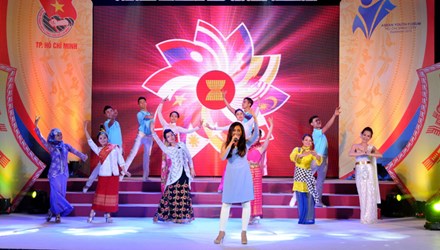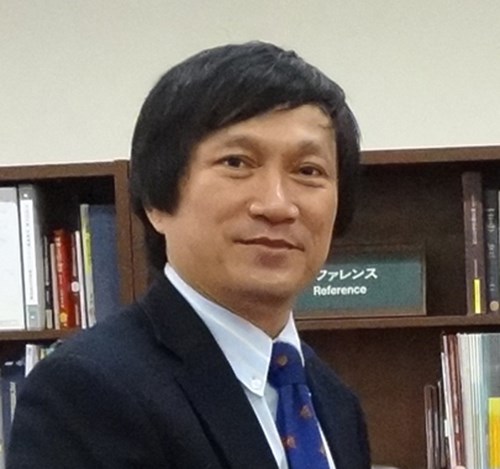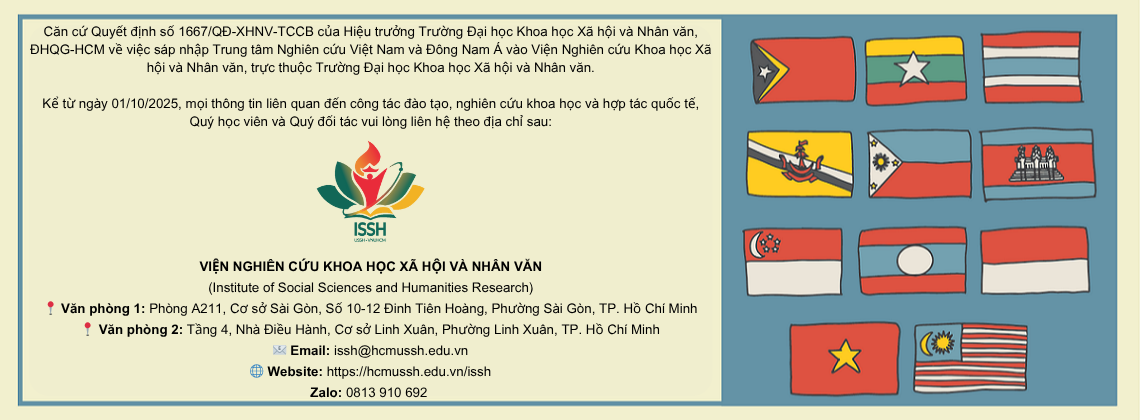ASEAN – THE STORY OF A BUNCH OF CHOPSTICKS
, 29/01/2016 14:01On November 20th 2015, a delegation consisting of Vietnamese representatives led by the Prime Minister Nguyen Tan Dzung attended the 27thAsean Summit and other related summits in Malaysia.
In the next day, TienPhong Newspaper interviewed Prof. Carlyle Thayer from Australian Defence Institution and Dr. Tran Dinh Lam, Director of Center for Vietnamese and Southeast Asian Studies.

(The Youth Forum ASEAN 2015 took place in September in Ho Chi Minh City)
Dr. Tran Dinh Lam (Director of Center for Vietnamese and Southeast Asian Studies): Strengthening cooperation.
The establishment of ASEAN community faces a number of obstacles. So what do you think how we can overcome them?
There are a number of obstacles such as difference in religion, culture, geography and level of economic development of member countries, imbalance within each country, and lack of consistency in the evaluation of the East Sea dispute. According to a survey of ASEAN, 92% of the process of the economic community has been achieved, 82% socio-cultural community, 12% political and security community. This indicates that the biggest obstacle for the development of the ASEAN Economic Community (AEC) is political and security issues. To overcome this obstacle, it requires the solidarity of the ASEAN community to find long- term solutions to the conflicts with China and against its unreasonable claims. Ten members need to have a common voice on the East Sea dispute. Based on the evaluation of ASEAN, the economic community should set out its top priorities, then member countries shall cooperate with each other to share and exploit natural resources for economic development, considering it prerequisite for a common success. The countries will help each other in the competition and effective management of resources to promote the economic growth together. Depending on the competitive advantages of each country, the manufacture should be coordinated upon optimal products.

Dr. Tran Dinh Lam (Director of Center for Vietnamese and Southeast Asian Studies)
After the establishment of a common community, there is a saying that the strong will be stronger and the weak will be weaker. What do you think about this?
The group of under- developed countries in AEC will face more challenges because their shortage of internal resources will make them difficult to compete with other countries which have more experience in controlling quality of goods and services, attracting investment and organizing business. In addition, the inappropriately trained human resources will result in low productivity. The small and medium enterprises of this group of countries do not care much about AEC and lack preparation for integration, thus facing more risky problems.
Therefore, the administrative apparatus governing the countries should be specialized, compacted, managed by well-trained and competitively-selected technocrats. The officials shall work with responsibility and pride in being served for enterprises, enabling them to develop business, pay more taxes to the state so that their governments can pay them more and bring ASEAN a common prosperity. In fact, Singapore has done these things successfully, while in the 1960s, it was just a poor fishing village, it has now become a strong and wealthy country with economic prosperity and GDP per capita of more than USD 56,400. Meanwhile, Myanmar in the 1960s was the most prosperous economy in Southeast Asia with the biggest rice export in the world and with a diversity of natural resources, especially gems like sapphire, ruby... accounting for 90% of the world. After a period of applying closed-door policy, it now is the poorest country in Southeast Asia with GDP per capita of over USD 1200 only. However, the positive changes in the last general election in Myanmar has shown that there arises a belief among the people which is being eager and enthusiastic to rebuild the country, towards an integrated, peaceful ASEAN Community sharing common values,the Community always protects the common voice, unites and avoids conflicts toward humanitarian values of development.
Prof. Carlyle Thayer (Australian Defence Institution): Keeping a Code of Conduct in East Sea (COC)
How does China acknowdge the union of ASEAN? How should ASEAN react?
China claims that ASEAN is not too strong but not too weak. China wants an obedient ASEAN, an ASEAN contains wishes of China. Because ASEAN operates under synchronous principles, China can “court” Cambodia, for example, in order to prevent ASEAN from performing policies related to East Sea that China does not like. Each member country is a chopstick in a bunch. It is easy to break off one chopstick, but it is hard to break off a bunch of them.Currently, ASEAN just use communication to urge China abide by international laws and ASEAN’s regislations. ASEAN should be patient and determined to request China for agreeing on COC in East Sea because there is no feasible option.

Prof. Carlyle Thayer (Australian Defence Institution)
In November, suddenly Indonesia announced that they could sue China for territorial sovereignty in East Sea. Meanwhile, Indonesia want to strengthen their co-ordinating role between ASEAN and China. What do you think about this?
The President Joko Widodo has reinforced to protect sovereignty, especially the territorial waters around Natuna Island. When Indonesia was under the President Widodo, Indonesian was bored because of the disorder among ASEAN member countries. Currently, the country is looking for ways to play a more independent role. However, it is up to ASEAN decision whether ASEAN allows Indonesia to play an intermediary role in communication or not. Co-ordinating the relationship between ASEAN and China is Singapore’s responsibility this year.
Source: http://www.tienphong.vn/the-gioi/asean-cau-chuyen-bo-dua-935257.tpo














